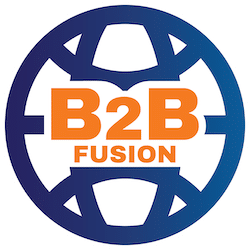Clay is an incredible tool, a swiss army knife of all data and martech tools! So many use cases.
You’ve probably read part 1 and part 2 of our series on Clay.
In this third part of our series, we’ll dive into our passion area – data. You can see how and why this tool is so powerful in it’s waterfall capability.
One of Clay’s most powerful capabilities is its “waterfall” email finding and verification system. This approach addresses a common sales/marketing challenge: getting a correct email address for each prospect (and ensuring it’s valid). Here’s how Clay’s waterfall for emails works and how you can set it up:
- Sequential Multi-Provider Search: Instead of relying on a single email finder (like just Hunter.io or just Lusha), Clay will sequentially query multiple email databases to find an address. You typically start with minimal info – often the person’s name and their company domain are enough. Clay’s default email waterfall comes with six providers out-of-the-box, and you can add more. For example, Clay might first check a provider like Prospeo; if Prospeo doesn’t return an email, it moves to DropContact; if that fails, then Datagma; then Hunter; and so on, until an email is found. This massively increases your chances of finding a valid address. According to Clay, this waterfall method routinely triples data coverage and quality for customers. Essentially, if provider A has only a 40% chance to find someone’s email, adding provider B, C, D, etc. in sequence can raise the coverage to near 100%. Clay orchestrates these API calls automatically in the background as one combined step.
- Built-in Email Verification: Finding an email is only half the battle – you also want to ensure the email is valid (not going to bounce). Clay’s waterfall has email verification integrated as part of the process. By default, once an email is found from one of the providers, Clay will run it through ZeroBounce (a leading email validation service) to check its deliverability. You have the option to use a different verifier if you prefer, but ZeroBounce is provided out-of-box. The clever part is: if the email fails validation (say it’s an alias or a catch-all domain), Clay can continue the waterfall to try finding another email from the next provider. This means you don’t end up with a single, unverified email and call it a day – Clay ensures the final output is a verified, safe-to-send address. You can even configure how strict the validation should be (e.g., whether to count “catch-all” emails as valid or not). The result is a much higher accuracy of emails. In practice, users see significantly improved email deliverability because they’re only using vetted addresses; one workflow example touted 80%+ valid email rates using Clay’s waterfall vs. much lower from a single-source tool.
- Example Workflow – Email Enrichment Waterfall: As a concrete example, suppose you have a list of prospects with Name and Company. In Clay, you add a column “Work Email” and select the waterfall enrichment for work emails. You might configure the sequence: Prospeo → DropContact → Apollo → Snov.io → Hunter → (plus others) and enable ZeroBounce verification at the end. When you run it, Clay goes provider by provider. If DropContact finds “jane.doe@company.com” and ZeroBounce marks it valid, Clay will output that as Jane’s email and stop there. If DropContact finds nothing, it moves on to Apollo; if Apollo finds an email but ZeroBounce flags it as invalid (or catch-all, if you chose to skip those), Clay will keep going to the next source until it finds, say, a valid email via Hunter. Only then does the “Work Email” field get populated. All along, Clay keeps track of which provider supplied the data and the validation result (you can even see the behind-the-scenes verification columns if you unhide them). This sequential approach is why we call it a “waterfall” – it cascades through sources until success. From the user perspective, it’s just one enrichment step that dramatically improves your chances of getting a correct email for every lead.
- Beyond Emails – Waterfall for Any Data: While email is the most popular use, the waterfall concept applies to other data too. You can create waterfalls for phone numbers, social media profiles, technographic data, etc. For example, to find direct dials, you might chain providers like Numlookup, Lusha, and PeopleDataLabs. Clay even allows custom waterfalls – you pick any sequence of providers for the data point you need. This ensures that for critical info (phone, email, etc.), you’re not leaving it to a single source. The bottom line: by verifying across multiple providers and only accepting vetted results, Clay’s waterfall enrichment gives you extremely reliable contact data. Users no longer have to guess which tool will have the email or buy multiple tools – Clay combines “using them all” into one workflow.
As you can tell from our excitement in part 1 and part 2, this Clay tool is incredible – and there are many other use cases. How are you using Clay to solve your issues?
